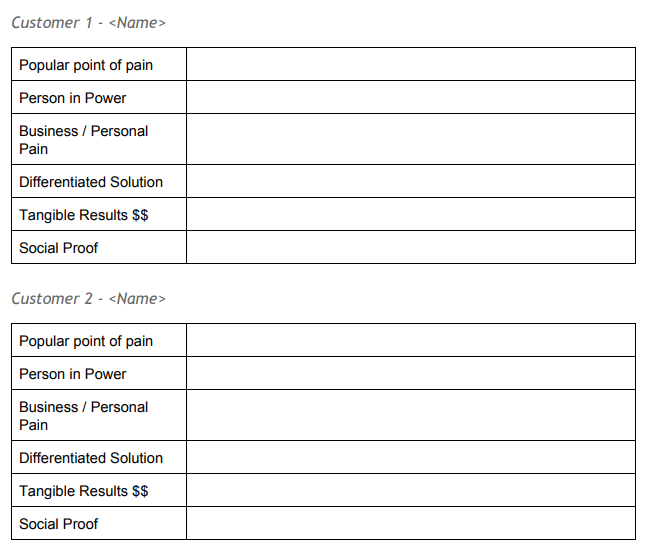How to find your niche in 5-easy steps (with Niche Canvas)

You may have the best product, marketing team, sales team and the knowledge in your business field. However, finding a niche strategy that differentiates your product from the market is one of the biggest challenges. Otherwise, you could get lost among other competitors.
First, it is crucial to understand that none of those big names were serving too many kinds of customers in the beginning. Keep your dreams and vision big, but to succeed, you need to find your niche first.
What is a niche?
A niche is a small part of a broader market that has its own specific needs. Small might sound scary. However, with a niche, you do not limit your audience and growth, neither are you limiting your business.
It is important to distinguish your product from fierce competition in the market by focusing on small, precise and well-defined portions from your audience.
Why finding a niche is so critical?
“When you speak to everyone, you speak to no one.”
– Meredith Hill
You could do multiple things well, but the most reliable thing to do would be focusing on that specific niche market where you have the best chances.
If you focus on solving one single problem, you can then build a reputation with tangible results. Eventually, you can generate interest in others who are facing the same issues.
Here are some companies that focused on their niche very clearly:
- Salesforce.com began with the automation of the sales force and then added more niches.
- Facebook started with Ivy League Universities, the best and most significant in the United States, before releasing access to everyone;
- Amazon started selling only books;
- Zappos only sold shoes
How to develop your niche marketing strategy in 5 steps.
Quite likely, you could have tons of ideas in your head about your own niche. To specify these ideas and get one step closer to find your niche, you can follow these five steps:
1. Find a frequently occurring pain point among your niche
Your product might be marketing training, but what is the specific problem of your customer? Is it lead generation? Is it outbound marketing or video marketing? How can you solve this problem with your very own product or service?
At the same time, the pain point has to be recognizable enough. If you narrow down your solution too tightly, it will be hard to find customers after a while. You have to find a pain point for which people are willing to pay a solution and you will find prospects spontaneously.
2. Tangible results
What problem do you want to solve?
Imagine you sell Project management software and your slogan is: “See the bigger picture in project management with the “X brand.”. It won’t convince many customers. Your claim has to be concrete and credible. Also, it has to be about your niche, not you.
How about “Share project updates with your team in 30 seconds” or “get 80% open rate in your cold email campaigns” These offers are better because they solve a specific problem. They are directly to the point and tangible with numbers and rates.
3. Convincing solution
Your customers hear empty promises every single day. They have to believe that you can fulfill your claim. Also, you want (have) to make your niche believe (know) that your solution will work for them.
Verify your promises with detailed case studies or testimonials. Show expertise, confidence and authenticity with real examples to help them choose your service.
4. Identifiable targets
Let’s say you feel close to find your niche now. The next challenge is to find your audience on the internet. Where are they? Which medium are they using? Can you reach them? If you can find lists of prospects, markets or companies, then you are good to go.
5. Find your unique personality
“To find or be found, to close deals, to avoid commoditization, you must be different or unique.” – Aaron Ross, From impossible to inevitable
Everyone has a unique personality. Your brand is the same. How can you stand out from the crowd that is formed by your competitors? Maybe your uniqueness lies in your creative tone of voice, your excellent customer service, your incredible innovations or product features that are never seen before.
If you think you have one, start polishing it! If you haven’t discovered it yet, work on it.
This blog post can help you find your unique genius.
How to find your niche with Niche Canvas
Now it’s time to walk the talk. This exercise will help you to find your primary niche. Every piece of information is essential, so gather your team around the table. Do not expect to find the perfect niche in one day.
It could take weeks. Give yourself time and take this very seriously. Finding your niche is going to be the backbone of your business.
1. Make a list for your market niche
List five to ten niches where you could work with. Then answer the following questions with your team:
- What was the pain point or problem your customers want to have solved?
- How do they decide to solve it, what triggers them to decide to buy?
- Specific results they desire?
- What is the solution they want?
- Deal size or financial results (how much money did you make, or how much did you lose?)
- On a scale of 1 to 10, how much do you want more projects like these?
Identify your niche by some specific measurements like:
- Where does the most demand come from?
- Where does the most revenue come from?
- About which niche is your team more passionate or excited?
2. Rate your niches in the niche canvas
Now you have enough niches on your list. It is time to narrow your list down and compare them. You are going to analyze your primary niche using these criteria:
Niche: What is the market or case of your target? Is it inbound marketing, customer services, or traditional advertising?
Pain point: What needs to be solved? Lead generation? CRM reports?
Decision maker: Who is in charge of making decisions? Who has the most power in the team? Find that person.
Personal issues: What kind of problems does he have? What are the expectations of his executives? What embarrasses him in front of the CEO?
Solution: What does he need to solve the problem?
Do not forget: your customers want to buy an indispensable solution, not a nice-to-have service. Position your product as a necessity for that specific case.
Results: What are the tangible benefits that customers get? For example, “Sales close-rate increased by 45%.” Demonstrate the (financial) gains of your product.
Proof: Get ready to demonstrate that your offer is real. That will help your niche to make decisions.
When possible, it is better to show than talk about it.
- Free trials
- Case studies with details
- Testimonials, especially in video format.
- Lists of logos or brand names
- Stories
- Demonstration
Fill the canvas with your ideas; it will unfold the way to find your niche. Take some time with your team to rate and choose 1-3 niches for your strategy.

Niche Canvas, Image Source: Aaron Ross, Jason Lemkin (2016), From Impossible to Inevitable. John Wiley & Sons, Inc., Hoboken, New Jersey.
3. Get started
Try your first lead generation campaign with your primary niche. Find some prospects and try to interview them to validate your steps in the niche canvas (see image above).
In this phase, you can develop your niche from the reactions you collect from campaigns and comments.
Think, execute and analyze fast. Don’t overthink; your results and learnings will lead you to growth. If everything goes according to plan, keep your niche. If not, go back to the canvas until you find your niche.
You can get ten customers without knowing why, but if you get two and understand how you did that: congratulations, you hit the gold (niche) mine! Now you can repeat and achieve hyper-growth.
